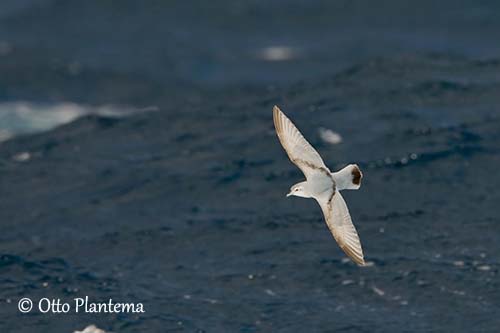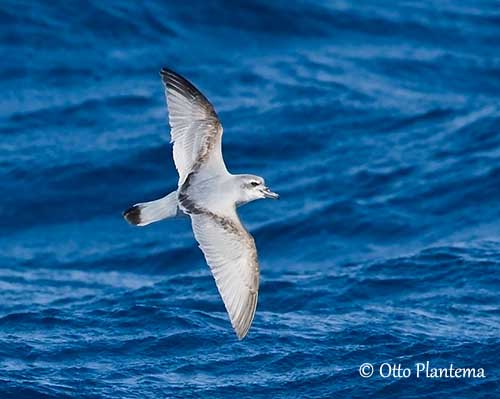
Fr: Prion colombe
Ang: Fairy Prion
All: Feensturmvogel
Esp: Prión piquicorto
Ita: Prione tortora
Nd: Duifprion
Sd: ljushuvad valfågel
Photographers:
Ken Havard
My Bird Gallery & Flickr gallery 1 & Flickr gallery 2
Otto Plantema
Trips around the world
Alan & Ann Tate
AA Bird Photography
Text by Nicole Bouglouan
Sources:
HANDBOOK OF THE BIRDS OF THE WORLD vol 1 by Josep del Hoyo-Andrew Elliot-Jordi Sargatal - Lynx Edicions - ISBN: 8487334105
A Complete Guide to Antarctic Wildlife by Hadoram Shirihai and Illustrated by Brett Jarrett - Edited by Guy M. Kirwan - ALUL.A Press Oy, Finland - ISBN 9519894705
BirdLife International (BirdLife International)
Department of Sustainability, Environment, Water, Population and Communities
Wikipedia, the free encyclopaedia
New Zealand birds and birding (Narena Olliver)
Fairy Prion
Pachyptila turtur
Procellariiformes Order – Procellariidae Family
INTRODUCTION:
The Fairy Prion is the smallest species of the genus Pachyptila and shows the characteristic blackish M on the upperwings.
It is found in the Southern Ocean. It breeds in colonies and nests in burrows or rock crevices, usually on small islands.
The name of this species comes from its most typical call, a faint coo fairly similar to that of some doves.
DESCRIPTION OF THE BIRD:
Biometrics:
Length: 23-28 cm
Wingspan: 56-60 cm
Weight: 90-175 gr
The adult has pale blue-grey upperparts, with the typical blackish M-shaped pattern across the upperwing, and a broad, black terminal tail band. The outer rectrices are whitish.
The underparts are white, including underwing and undertail, but the blackish terminal band is visible.

The pale blue-grey head is darker on forehead, crown and upper ear-coverts, often darkest in front of the eye. We can see a short white supercilium. The lores are whitish and there is an indistinct greyish eye stripe, usually darker than the crown.
The stout bill is pale blue with black culmen and greyish-blue hooked tip. The nasal tubes are visible at base of the upper mandible. The eyes are blackish. Legs and webbed feet are pale blue-grey with pale pinkish webs.
Male and female have similar plumage, but the female is slightly smaller with shorter bill.
The juvenile resembles adults.
SUBSPECIES AND RANGE:
The Fairy Prion is found in subtropical and subantarctic waters. It breeds in Falkland Islands and South Georgia, E through S Indian Ocean to St Paul and Kerguelen Islands. It also breeds on islands off SE Australia and Tasmania (including Bass Strait), and off New Zealand (S from Poor Knights and Snares Islands and Chatham Islands), S to Macquarie, Campbell and Antipodes Islands.
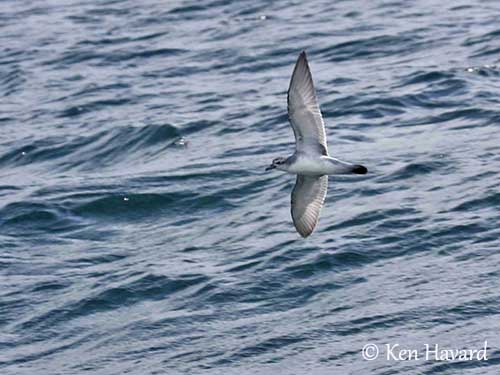
The Fairy Prion has two subspecies.
The nominate race P.t. turtur occurs in most of the range.
The race P.t. subantarctica is found in Antipodes, Snares and Macquarie islands.
They slightly differ in bill size and body length, and in plumage tones. But both races are very similar.
HABITAT:
The Fairy Prion is a seabird usually found in offshore waters except during stormy weather conditions. It frequents the open sea near the colonies, and rarely occurs in sheltered coastal waters.
During the breeding season, it breeds on oceanic islands. The colonies are established in coastal areas such as cliffs, boulders and steep slopes, but also in grasslands with sparse vegetation, and even beneath trees.
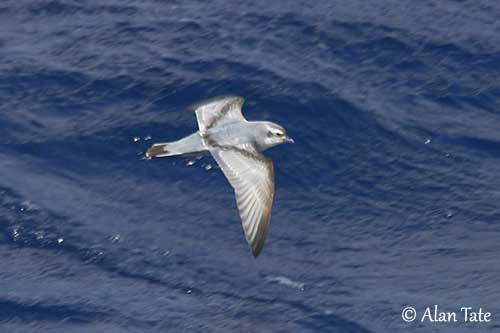
CALLS AND SONGS: SOUNDS BY XENO-CANTO
The Fairy Prion is usually silent at sea. However, like numerous Procellariidae species, it becomes vocal at night and calls from the ground at colonies.
The most typical call is a soft crooning or guttural cooing, given from the ground and in flight. It also utters a common harsh call often repeated “poor popper, popper, popper pop” usually given by males, while females give an “err-err” in flight, often rising towards the end. We can also hear a rattling rapidly repeated “per-per-per-per” and a shrill “pihihihi” in alarm. Male and female show marked differences in vocalizations.

BEHAVIOUR IN THE WILD:
The Fairy Prion feeds primarily on small crustaceans, but it also takes fish and squid. Preys are typically caught by dipping while flying, pattering, surface-seizing and surface-plunging, but the main techniques are dipping and surface-seizing.
The food includes mainly krill of 10-20 millimetres long, such as Nyctiphanes australis and Euphausia superba. Copepods and amphipods are taken too.
They form mixed foraging flocks with other prions and storm-petrels around fishing boats and at abundant food sources. It also forages with cetaceans that drive the preys to the surface.
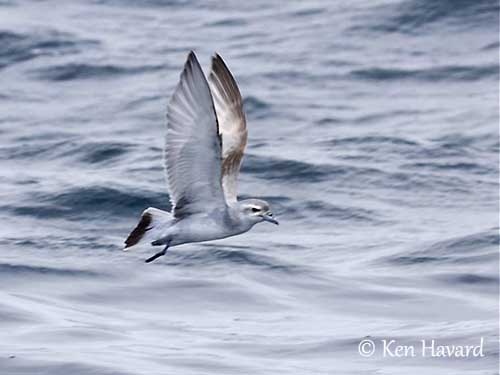
The Fairy Prion is a gregarious seabird nesting in large colonies. They are monogamous with long-term pair-bonds. The pair uses the same burrow in several following years. They visit the colony at night to avoid predation, but some of them may remain in their burrows during the day.
Mates perform the typical “billing” courtship display, and mutual preening, both inside the burrow.
The Fairy Prion probably moves N after breeding into subtropical waters, and it can reach the waters off SE Australia and South Africa in winter. Some birds only disperse to waters adjacent to breeding colonies. Small numbers still occur at colonies throughout winter, especially on Crozet islands and around South Georgia.
The Fairy Prion flies low over the water with shallow wingbeats and on stiff wings. But it is able to perform rapid manoeuvres.
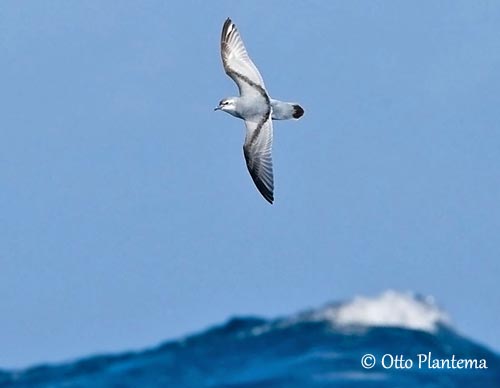
REPRODUCTION OF THIS SPECIES:
The Fairy Prion returns to the colonies in September, usually one month later in the southern part of the range. It often breeds in mixed colonies with Common Diving-Petrels on islands off SE Australia.
It nests in self-excavated burrows of 20-80 centimetres deep, but also in rock crevices, both lined with leaves and twigs.
The female lays a single white egg in mid-October and both adults incubate during 47 days, with stints of 3 days and 2 nights. At hatching, the chick has greyish down. It is brooded for the five first days. Both parents feed it at night by regurgitation. It fledges between 43 and 56 days after hatching and leaves the island at night in early January. It is sexually mature at 3-4 years of age.
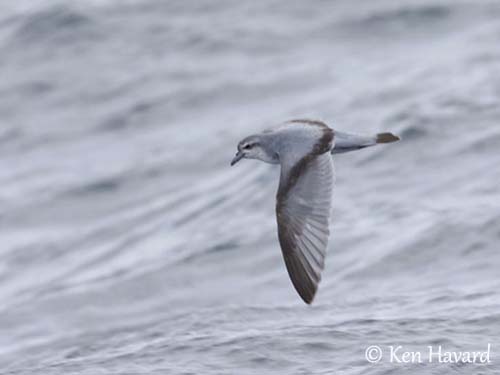
PROTECTION / THREATS / STATUS:
The Fairy Prion is threatened on the breeding sites by introduced predators such as cats and rats, but Weka, Swamp Harrier (in New Zealand) and skuas are important predators too. However, several islands are now free of predators.
Some colonies are affected by local soil erosion which destroys the burrows.
But the population appears stable and was estimated at around 5,000,000 individuals in 2004.
The Fairy Prion is currently evaluated as Least Concern.
